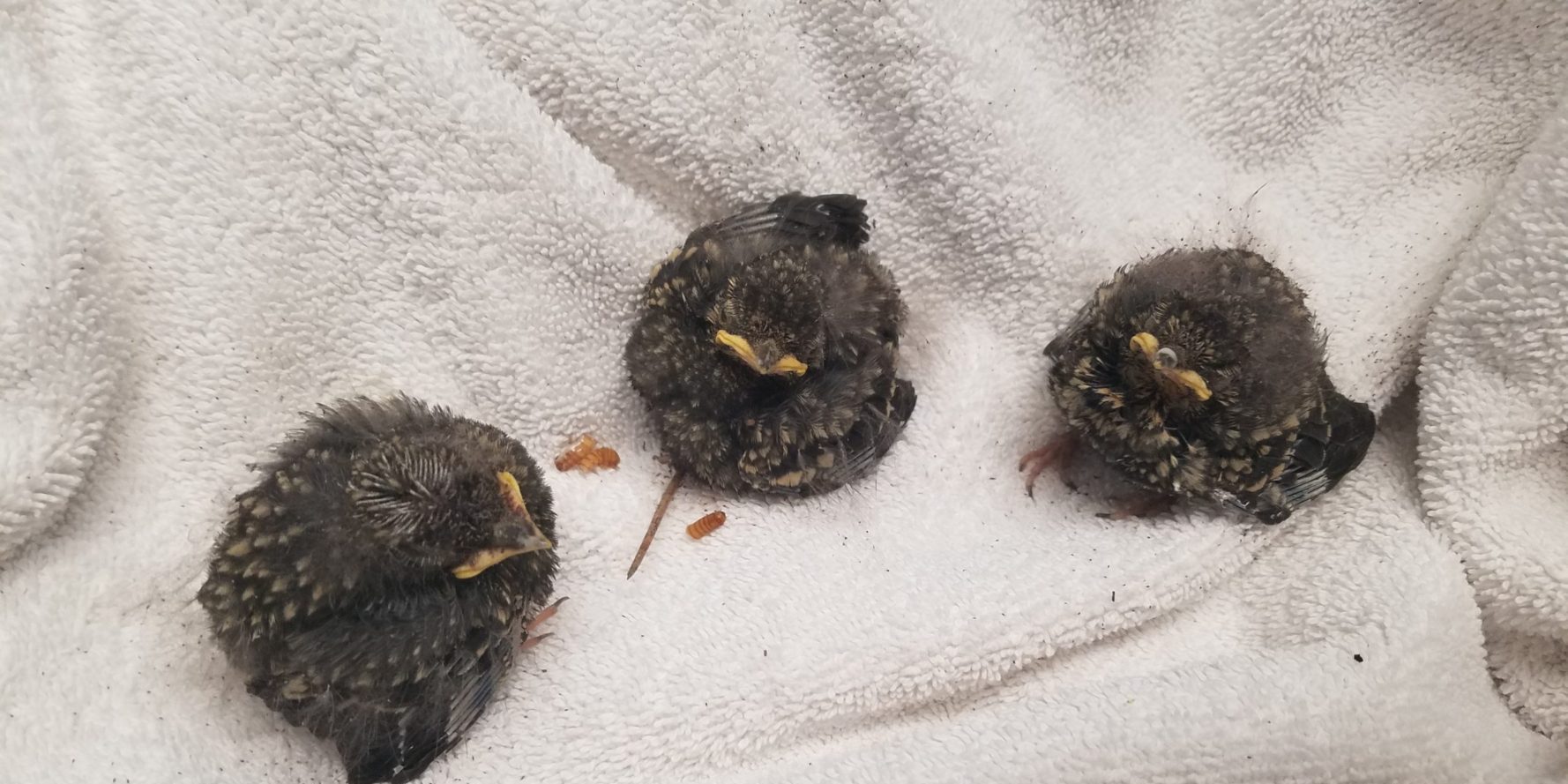by Kelli Neumann, Animal Program Coordinator and Amanda Accamando, Nature Center Manager
Over the last few weeks, we have welcomed each new sign of spring to Sunriver. The return of the red-winged black birds; Belding’s ground squirrels popping up out of their subterranean hibernacula; mason bees taking flight; and willows beginning to flush and bloom. Birds especially come to life as courtship displays, territorial disputes, and nesting behaviors are all readily observed. For us at Sunriver Nature Center & Observatory, the nesting season also brings many calls from concerned residents who suspect an abandoned nest or chick or who may be dealing with nests placed in undesirable locations. Knowing how to tell when a bird truly needs help and intervention from humans is paramount to being a friend to wildlife during the busy baby season. In many cases, picking up or rescuing an animal will not be the preferred course of action.
It is no secret that birds will sometimes nest in inconvenient locations for us humans. For example, in Sunriver it is common for birds to nest on top of outdoor lighting fixtures. In one case a few years ago, a homeowner delayed putting away their Christmas decorations, and unknowingly invited a robin to construct a nest tucked into an artificial wreath on the front door. Active nests of native species, those that have eggs or chicks, are off limits to human meddling. The Migratory Bird Treaty Act protects most bird nests and makes it illegal to destroy the nest. What do you do if a bird nests on your lighting fixture? If the nest is active, you will need to leave it until the chicks are no longer dependent on the nest. At the same time, to prevent a serious fire hazard, remove the lightbulb. After the chicks have fully fledged, you can remove the nest and make modifications to the light fixture to prevent future nesting. We recommend installing a suitable nest box nearby to provide alternative habitat for the bird.
A baby bird found on the ground, outside of the nest is another common scenario. Determining whether a bird is truly orphaned will depend on their age, species, and behavior. Birds that are nearly or mostly featherless, called hatchlings or nestlings respectively, are still reliant on their parents. If you can see the nest and the bird is not clearly injured, you can return this age bird to its nest. However, if the bird is fully feathered, perhaps with reduced tail feathers, you likely have an adolescent bird, also called a fledgling, who has left the nest. Fledglings may spend a lot of time hopping on the ground as they learn to fly. This is completely normal. Observe the fledging from a distance and you can expect to see the parents flying by to check on them and feed them. It is a good idea to keep cats, dogs, and even tiny human beings out of this area until the fledging is fully able to fly. If you cannot find the nest in the case of a hatchling or nestling, or you are positive that the parents are not returning to feed the fledglings on the ground, contact the nature center or a wildlife rehabilitator in your area.
If a baby bird needs the help of a professional wildlife rehabilitator because it is visibly hurt, sick, or you have determined that the bird is truly orphaned, you will want to provide the animal with a secure space that is quiet, dark, and warm until help is available. A cardboard box or pet carrier lined with a towel will make a secure container for transport. Do not feed or give water to the bird as many have specialized diets and feeding can do more harm than good. Last, but certainly not least, resist the urge to continuously check on the bird. The peering eyes of a giant predator will cause unnecessary stress to the bird.
Whether to actively intervene, let nature take its course, or reach out for professional help, is rarely a black and white decision. If you have any doubt at all about which course of action to take, reach out to the nature center or a local wildlife rehabilitator who can guide you and ensure the best possible outcome for the animal. If you are looking for a deep dive into this subject join us for our upcoming Living with Wildlife virtual workshop, Looking Out for Neonatal Wildlife, on Tuesday, May 25 at 6pm.

